May 23, 2013
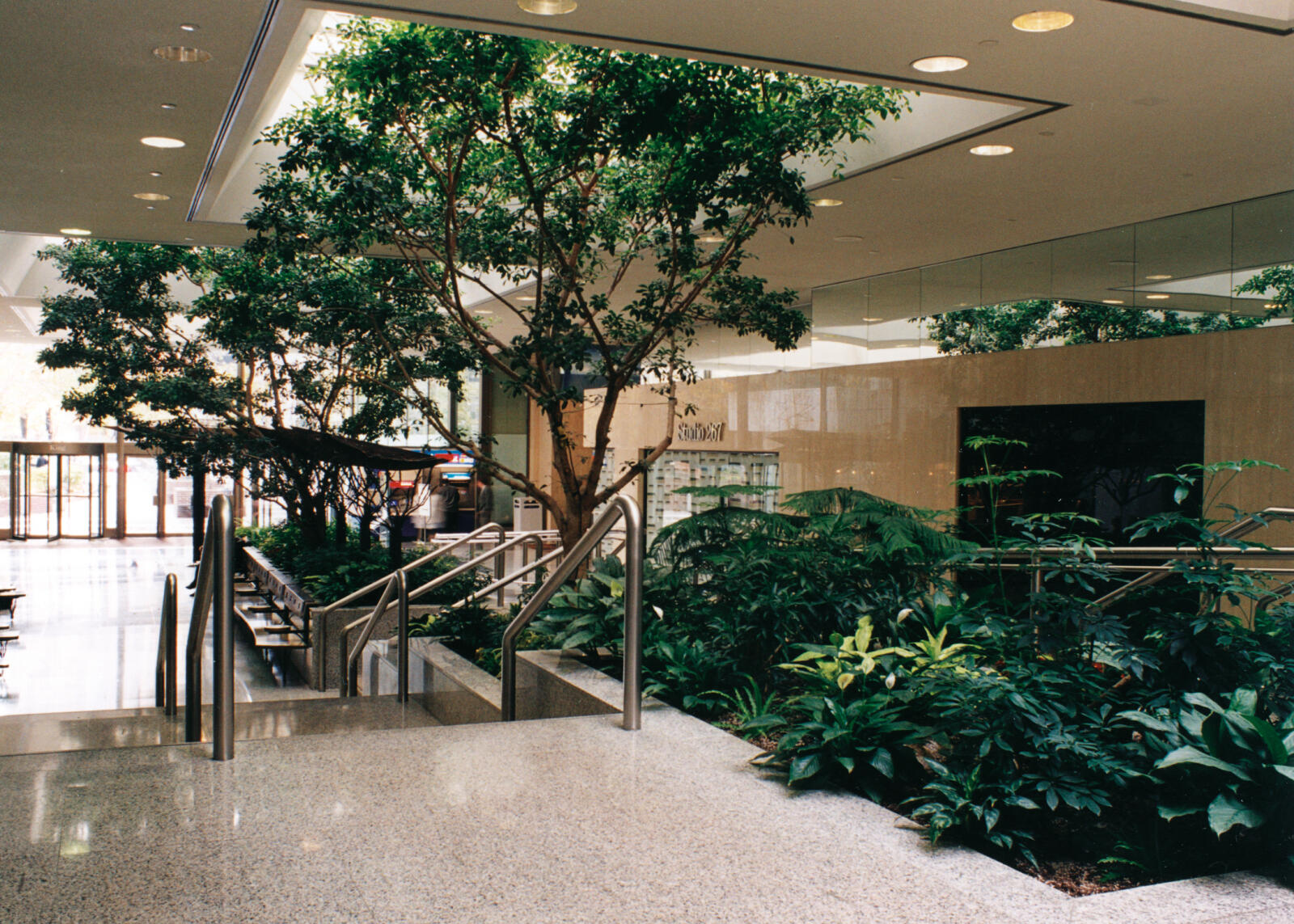
Interior landscaping: A practical user’s guide
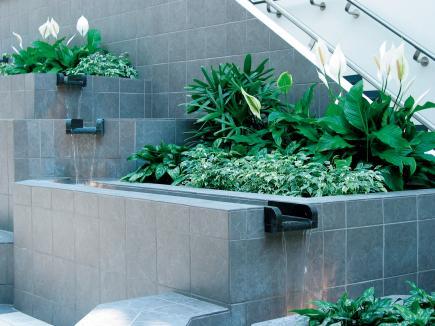 People like plants. And where there are people, the indoor environment is improved by the addition of a well-planned, well-executed and well-maintained interiorscape.
People like plants. And where there are people, the indoor environment is improved by the addition of a well-planned, well-executed and well-maintained interiorscape.
By drawing on the specialized skills, knowledge and technologies available through an interiorscape professional, your ideas can become reality.
The interior landscape process consists of three main components:
you are invited to call the Landscape Ontario office or visit our website for more information on contacting professional interiorscape members in your area.
Design and consultation services
A good design offers logical solutions to potential site concerns and ensures the compatibility of plant selection with proposed environmental conditions.
Whether the project is a new installation or the refurbishing of an existing interiorscape, the key to success is a good planning process, best facilitated by the hiring of a qualified interiorscape designer or consultant.
Services offered by designers include:
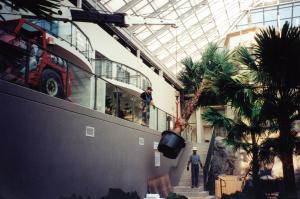 Installation
Installation
The key to a successful project is to be sure you are working with a credible, qualified contractor. Price should never be your single determining factor. A higher priority is knowing the contractor can meet your expectations, especially as they relate to quality, size and scope of work. Be sure these concerns are appropriately addressed when researching contractor references.
Using the following criteria will enable you to determine whether the contractor has the necessary capabilities to complete the project as intended.
Plant preparation
Prior to delivery, tropical plants should be both fully acclimatized and properly prepared. This preparation should include:
 Delivery
Delivery
Minimizing stress to tropical plants that are moved from ideal growing conditions to the indoor environment requires expertise and proper equipment. Delivery considerations may include:
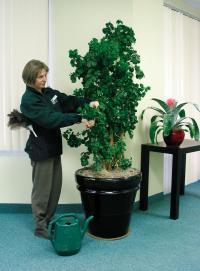 Maintenance
Maintenance
Generally, design and installation may be considered one-time, relatively short-term contracts. Maintenance contracts, on the other hand, are long-term and can include many different components. Review competing maintenance agreements carefully to be sure that you are in fact comparing apples to apples when hiring a maintenance contractor.
Depending on the size and scope of the maintenance contract, it may be advisable to seek the services of a consultant to develop an appropriate maintenance regime for the long-term protection of your interior landscape investment.
Service
A good maintenance program will offer all of the services listed below. Determine if each item is part of the maintenance contract price or if it will be an extra charge.
Most contracts include a warranty or guarantee on the plant material and maintenance services. Determine if the guarantee includes the cost of any plants that may need replacing and if there is an extra delivery charge. Warranty agreements should specify the length of the guarantee as well as details as to what is included and excluded.
Frequency of service
Frequency of service is an important consideration. Infrequent visits result in plant stress, shortening their expected life span.
Pest management programs
Indoors or out, from time to time, plants are affected by insects or diseases. You will need to determine not only if their treatment will incur an extra cost, but also how the contractor intends to deal with these challenges.
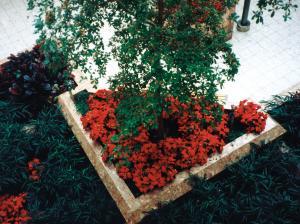 Seasonal colour
Seasonal colour
Once you have designed, installed and maintained your interiorscape with the assistance of a professional contractor, it becomes a relatively simple matter to expand the scope of your living decor, especially during important holiday seasons.
Services such as seasonal plant rotations are a great way to add colour to your lobby or office areas. It is recommended that you consult with an industry professional to discuss ways of maximizing the impact of seasonal and holiday plant displays.
 People like plants. And where there are people, the indoor environment is improved by the addition of a well-planned, well-executed and well-maintained interiorscape.
People like plants. And where there are people, the indoor environment is improved by the addition of a well-planned, well-executed and well-maintained interiorscape. By drawing on the specialized skills, knowledge and technologies available through an interiorscape professional, your ideas can become reality.
The interior landscape process consists of three main components:
- Design/consultation
- Installation
- Maintenance
you are invited to call the Landscape Ontario office or visit our website for more information on contacting professional interiorscape members in your area.
Design and consultation services
A good design offers logical solutions to potential site concerns and ensures the compatibility of plant selection with proposed environmental conditions.
Whether the project is a new installation or the refurbishing of an existing interiorscape, the key to success is a good planning process, best facilitated by the hiring of a qualified interiorscape designer or consultant.
Services offered by designers include:
- design and planting specifications
- evaluation of existing installations
- writing of project specifications
- writing of, or evaluation of, third party maintenance contracts
- sourcing of plant materials, products and accessories
 Installation
InstallationThe key to a successful project is to be sure you are working with a credible, qualified contractor. Price should never be your single determining factor. A higher priority is knowing the contractor can meet your expectations, especially as they relate to quality, size and scope of work. Be sure these concerns are appropriately addressed when researching contractor references.
Using the following criteria will enable you to determine whether the contractor has the necessary capabilities to complete the project as intended.
Plant preparation
Prior to delivery, tropical plants should be both fully acclimatized and properly prepared. This preparation should include:
- soil leaching
- re-potting
- cleaning
- pest prevention measures
 Delivery
DeliveryMinimizing stress to tropical plants that are moved from ideal growing conditions to the indoor environment requires expertise and proper equipment. Delivery considerations may include:
- climate controlled vehicles
- scheduling (after office hours or not)
- plant protection
- supervised/qualified delivery and installation personnel
- special delivery requirements
- On-site or off-site preparation
Determine with the contractor the scope of the project and how much work will be completed both on and off-site. By performing as much work as possible off-site, disruption to your workplace is minimized. - Quality of plant material
Accepted standards of quality have been developed by the industry and are specified by the Associated Landscape Contractors of America (ALCA). - Planting techniques
Must be in accordance with horticulturally sound industry practices, as specified by ALCA. - Scheduling
Predetermine if work will be completed during or after regular office hours. Be sure the contractor has the capability to complete the project within a prearranged, realistic time frame.
 Maintenance
MaintenanceGenerally, design and installation may be considered one-time, relatively short-term contracts. Maintenance contracts, on the other hand, are long-term and can include many different components. Review competing maintenance agreements carefully to be sure that you are in fact comparing apples to apples when hiring a maintenance contractor.
Depending on the size and scope of the maintenance contract, it may be advisable to seek the services of a consultant to develop an appropriate maintenance regime for the long-term protection of your interior landscape investment.
Service
A good maintenance program will offer all of the services listed below. Determine if each item is part of the maintenance contract price or if it will be an extra charge.
- watering
- pruning
- grooming
- fertilizing
- soil dressing
- media additions
- pest and disease control
- transplanting
- soil and water analysis
- relocation or moving
- plant inventory management
- communication log
- container washing and conditioning
- after hours special services (spraying, etc.)
Most contracts include a warranty or guarantee on the plant material and maintenance services. Determine if the guarantee includes the cost of any plants that may need replacing and if there is an extra delivery charge. Warranty agreements should specify the length of the guarantee as well as details as to what is included and excluded.
Frequency of service
Frequency of service is an important consideration. Infrequent visits result in plant stress, shortening their expected life span.
Pest management programs
Indoors or out, from time to time, plants are affected by insects or diseases. You will need to determine not only if their treatment will incur an extra cost, but also how the contractor intends to deal with these challenges.
 Seasonal colour
Seasonal colourOnce you have designed, installed and maintained your interiorscape with the assistance of a professional contractor, it becomes a relatively simple matter to expand the scope of your living decor, especially during important holiday seasons.
Services such as seasonal plant rotations are a great way to add colour to your lobby or office areas. It is recommended that you consult with an industry professional to discuss ways of maximizing the impact of seasonal and holiday plant displays.
Seven ways an interior landscape can benefit your business:
|
| To find an interior landscape professional near you, visit the Find a company page and click on Interior Landscape Companies. |